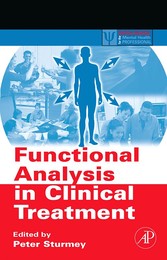Search and Find
Service
Functional Analysis in Clinical Treatment
WIth the ongoing pressures for psychologists to practice evidence-based care, and the requirement insurance carriers have both for treatment goals, measurement of outcomes, and a focus on brief therapy, functional analysis provides a framework for achieving all of the above. Having proven itself in treating behavioral problems in education, functional analysis is now being applied more broadly to behavioral and psychologial disorders.
In his 1996 book (Functional Analysis in Clinical Psychology, Wiley UK), Sturmey applied the functional behavioral approach to case formulation across a wide range of psychological disorders and behaviors. Since the publication of his book, no other volume has taken an explicit behavioral approach to case formulation. The changes that have occurred over the last 10 years in behavioral case formulation have been significant and substantial. They include (a) a large expansion of the range of problems addressed, such as ADHD, (b) a range of new verbal behavior therapies such as Acceptance and Commitment Therapies, (c) increased area of activity in the area of autism spectrum disorders, (d) many publications in how to train professionals, staff and parents in behavioral technology, and (e) new assessment instruments and procedures.
*Makes theories of functional analysis accessible to a wide range of mental health professionals
*Reviews behavioral assessment methods and strategies for case formulation
*Offers readers a practical, organized, data-based means of understanding psychiatric conditions for intervening effectively and measuring positive change
All prices incl. VAT












